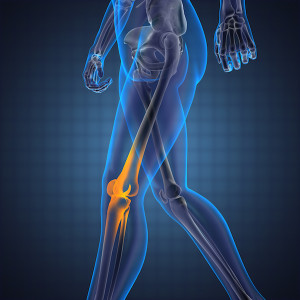
A knee replacement surgical procedure involves the removal of the arthritic part of the knee. This area is then covered with plastic and metal parts that form the new knee joint surfaces.
Surgeons employ computed tomography (CT) scans to create a virtual model of the patient’s knee in a robotic total knee replacement procedure.
They can use this model to guide the robotic arm to place the parts of the new knee accurately. Orthopedic Institute of the West, led by board-certified orthopedic surgeon Dr. Brandon Gough, provides hip and knee surgery to patients in Phoenix, Scottsdale, Arizona, and surrounding locations in the spectacular Grand Canyon State.
CANDIDATES FOR ROBOTIC-ASSISTED SURGERY
In a total knee replacement surgery, surgeons replace all three knee compartments. Patients with severe arthritis, stiffness or crookedness (deformity) are suitable candidates for a total knee replacement instead of a partial knee replacement.
The hip and knee surgeon will assess the patient’s individual condition before determining the most suitable procedure for them.
ADVANTAGES OF ROBOTIC SURGERY
Robotic-assisted knee replacement surgery offers the following benefits:
- Precise implant positioning allowing for a more natural feeling in the knee after the surgery
- Enhanced safety and lesser risk of injury to the surrounding tissues
- Tiny incisions providing for a faster recovery, shorter hospitalization, and less discomfort
- The possibility of better function in the long-run
HOW DOES THE ROBOTIC TECHNOLOGY WORK?
Prior to the surgery, the surgeon will create digital computed tomography (CT) scans of the patient’s knee. This data enables the surgeon to precisely determine the area where the knee implant should be placed.
While performing the surgery, the orthopedic surgeon utilizes the robotic arm to shape the adjacent bone prior to placing the implant accurately. The surgeon used real-time video images for better clarity enabling them to navigate areas that are difficult to visualize.
Simultaneously, the system uses the data from the CT image to develop a predetermined three-dimensional “envelope” of space where the surgeon performs the procedure. The robotic arm will move only in the predetermined area which eliminates the possibility of the instrument slipping and harming surrounding tissues.
WHEN IS TOTAL KNEE REPLACEMENT SURGERY ADVISABLE?
The surgeon may recommend total knee replacement surgery in several cases. Patients who require this procedure frequently have:
- Severe Pain or stiffness in the knee that restricts their routine activities such as climbing stairs, walking, and sitting down and rising from chairs. They may find it very restrictive to walk for more than a few blocks without experiencing debilitating pain and may need to use a walker or cane.
- Moderate to severe knee pain while resting during the day or night.
- Chronic swelling in the knee that does not resolve with medicines or rest.
- Knee deformity involving a bowing in or out of the knee.
- No significant response to treatments including anti-inflammatory drugs, lubricating injections, cortisone injections, physical therapy, or other surgical procedures.
POST-OP PAIN MANAGEMENT
The patient will experience some pain after the surgery. This is a normal part of the recovery process. Physical therapy and mild pain medications for a few days will help the patient recover more comfortably from the procedure.
Successful board certified orthopedic surgeon Dr. Brandon Gough receives patients from Phoenix, Scottsdale, Arizona, and other towns and cities in this section of the state for hip and knee surgery
For more information about hip and knee procedures and treatments by Arizona Board certified orthopedic surgeon, Brandon Gough, M.D., please click here or call us at 602-359-3088. Taking new patients in and around Phoenix, Scottsdale, Glendale, Tempe, Mesa and surrounding Arizona cities.


